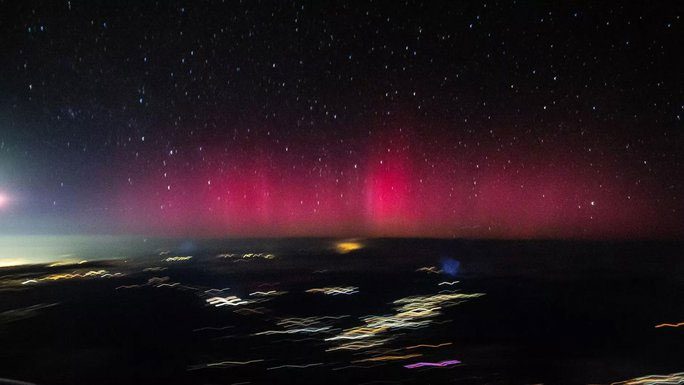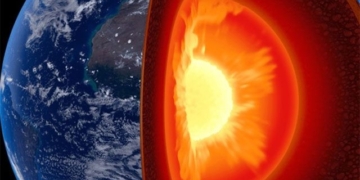A cosmic fireball, the strongest in the past six years, was launched from a “gun barrel” 20 times larger than Earth without any observatories being able to detect and warn about it. This event caused the sky to change color and disrupted shortwave radio communications for several hours.
According to Live Science, the phenomenon caused the night sky across the United States, from northern states down to southern Alabama and northern California, to change to a strange pink hue in the early morning of March 24.

Mysterious pink aurora in the sky of the United States captured from an airplane window – (Photo: Dakota Snider).
This was an aurora, specifically a rare form of aurora with unique colors and intensity, triggered by a G4 class geomagnetic storm, the strongest in six years in the U.S.
The cause of this event was also an incredibly mysterious and rare object: a coronal mass ejection (CME) that was “invisible,” meaning a plasma sphere with a powerful magnetic field ejected by the Sun towards Earth, but not easily observable like typical CMEs.
NASA and other leading space agencies, which have numerous observation instruments from spacecraft around the Sun to ground facilities, did not provide any prior warnings about this geomagnetic storm.
U.S. space weather expert Tamitha Skov stated in Space that no one could see the incoming geomagnetic storm because it was “almost invisible.” This fireball started moving slower than typical CMEs, making it hard to detect.
It must have been ejected from a solar coronal hole — a type of “cosmic gun barrel” that specializes in firing flares and fireballs — which is 20 times larger than Earth and was directed straight towards our planet.
Subsequent calculations showed that this CME traveled at a speed of 2.1 million km/h. This fireball collided forcefully with Earth’s magnetosphere in the early hours of March 24, causing magnetic field disturbances, generating auroras, and disrupting shortwave radio communications for several hours in some areas, which also impacted navigation systems.




















































